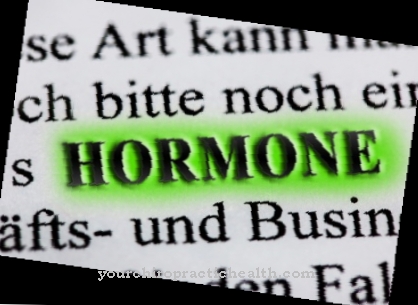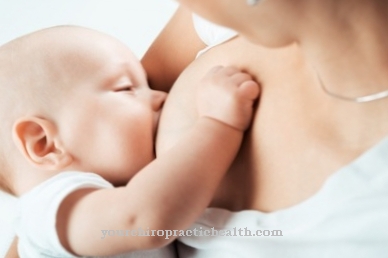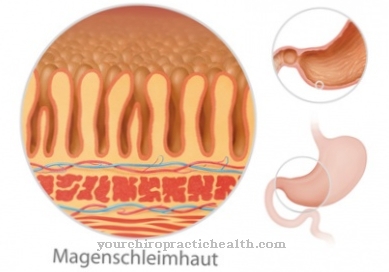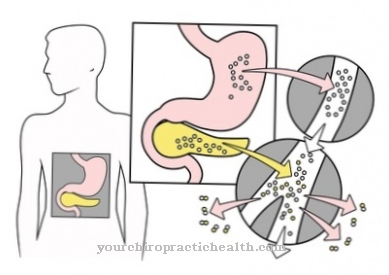With Kinaesthesia defines the ability to unconsciously control and steer the movements of body parts. The kinesthesia is therefore a sensation of the movement of the body, based on the proprioceptive system.
What about the kinaesthesia?

Proprioceptive systems are sensory systems that measure processes in the deep somatic tissues - muscles, joints, etc. Proprioception comprises three sensory modalities: the sense of movement, the sense of position and the sense of strength.
Kinesthesia works on the basis of receptors in the musculoskeletal system in the joints, muscles and tendons. More precisely in the muscle spindles, organs of vision such as the Golgi tendons and sensors in the joint capsules. For the most part, the kinesthesia is unconscious.
Often terms such as kinaesthetic perception, kinaesthetic sense or kinaesthetic sensory system are used as a synonym for proprioception in general. In this case, not only the sense of movement, but also the sense of position and force is meant.
The term kinaesthesia is made up of the two ancient Greek words 'kineō' and 'aisthēsis'. 'Kineō' stands for "to move" and 'aisthēsis' for 'perception, sensation'. The British neurologist Henry Charlton Bastian first used the term around 1800 to denote the sense of movement and the area in the brain responsible for sensation of movement - the Kinaesthetic Center.
The term kinesthetic is also used in nursing. Here kinaesthetics describes a concept that gently supports the patient's movement.
Function & task
The proprioreceptors in the muscles and joints register the stimuli. For example, the Golgi eyes register the tension of the tendon and thus the contraction of the muscle, i.e. its movement. The sensation is transmitted to the spinal cord on quickly conducting pathways. Here the stimulus can be passed on directly to motor neurons. This enables a faster reaction, since the stimulus does not have to be directed into the brain before it can be transmitted to a motor neuron. This is how reflexes worked.
Most stimuli, however, follow the conduction of excitation via the posterior cord tracts and the anterolateral system via thalamic nuclei to the cerebral cortex. The sensation of power is important for the so-called power dosage, i.e. the fine tuning of tone.Adjustment of muscle tone, posture, movement and power dosage is only possible if proprioception is functioning. This allows the necessary resistance and the correct voltage to be built up.
The main tasks of the sense of movement are postural coordination and movement coordination. Postural control is also called postural coordination. It coordinates the fact that body positions can be held over a longer period of time in order to be able to use them for the required action.
When coordinating movements, a distinction is made between gross motor skills and fine motor skills. However, this differentiation is not always clear, as both can run in parallel. For example, when throwing a ball, which in itself corresponds to a gross motor movement, the fingers work fine motor.
The coordination of movements also shows the importance of the interaction between the left and right hemispheres of the brain. Movements of the left and right halves of the body often flow into one another. Often movements also happen uncontrollably and without any intention or necessity. These are called associative movements. They often occur when the opposite side is imitating a movement being made on the other side of the body. Or when a person imitates the behavior of his counterpart. One speaks here of mirror movements.
In summary, it can be stated that kinaesthesia controls highly complex processes in the body. On closer inspection, it is also clear that, contrary to what was expected, not all movements are subject to arbitrary control.
You can find your medication here
➔ Medicines for paresthesia and circulatory disordersIllnesses & complaints
A disorder of movement and posture coordination is an ataxia. There are different forms of ataxia. It manifests itself in uncontrolled, excess movements. Ataxias can also occur with normal muscle strength, i.e. when there is no paralysis. It is also possible that only one half of the body is affected. In this case one speaks of a hemiataxia.
The causes can lie in the central (CNS) as well as in the peripheral nervous system. They can also be classified according to their etiology, the affected CNS segment and the affected movement. The causes of ataxias can be genetic or acquired. Patients with hypothyroidism from tumor diseases have an increased risk of ataxia. Ataxia can also be caused by alcohol abuse or other poisons. Divided according to the affected CNS segment, a cerebellar and a spinal form can be distinguished; people with multiple sclerosis are particularly often affected.
Depending on the movement involved, a stance ataxia, pointing ataxia, gait ataxia or trunk ataxia can also be distinguished. Standing ataxia may be preceded by damage to the cerebellum or diseases of the organ of equilibrium. It manifests itself in postural instability and fluctuations in the body. The pointing and gait ataxia manifest themselves, as the name suggests, when pointing at an object or when walking. The trunk ataxia, on the other hand, is noticeable through torso fluctuations when sitting.
The treatment of ataxia always depends on its cause, which ideally needs to be combated. But that also means that many forms of ataxia cannot be cured. In this case, the therapist usually recommends devices or apparatus to better deal with the ataxia. This can be, for example, walking sticks or special support for eating or speaking.



























